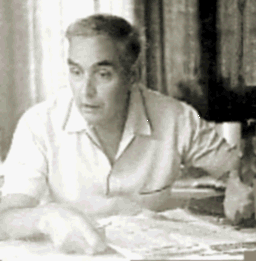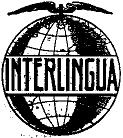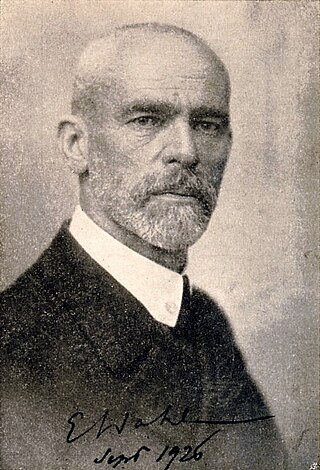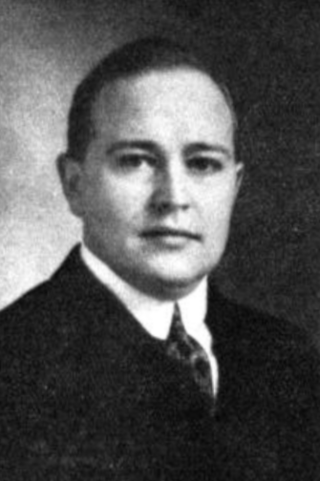
Giuseppe Peano was an Italian mathematician and glottologist. The author of over 200 books and papers, he was a founder of mathematical logic and set theory, to which he contributed much notation. The standard axiomatization of the natural numbers is named the Peano axioms in his honor. As part of this effort, he made key contributions to the modern rigorous and systematic treatment of the method of mathematical induction. He spent most of his career teaching mathematics at the University of Turin. He also created an international auxiliary language, Latino sine flexione, which is a simplified version of Classical Latin. Most of his books and papers are in Latino sine flexione, while others are in Italian.

Interlingua is an international auxiliary language (IAL) developed between 1937 and 1951 by the American International Auxiliary Language Association (IALA). It is a constructed language of the "naturalistic" variety, whose vocabulary, grammar, and other characteristics are derived from natural languages. Interlingua literature maintains that (written) Interlingua is comprehensible to the billions of people who speak Romance languages, though it is actively spoken by only a few hundred.

Interlingue, originally Occidental ( ), is an international auxiliary language created in 1922 and renamed in 1949. Its creator, Edgar de Wahl, sought to achieve maximal grammatical regularity and natural character. The vocabulary is based on pre-existing words from various languages and a derivational system which uses recognized prefixes and suffixes.
An international auxiliary language is a language meant for communication between people from all different nations, who do not share a common first language. An auxiliary language is primarily a foreign language and often a constructed language. The concept is related to but separate from the idea of a lingua franca that people must use to communicate. The study of international auxiliary languages is interlinguistics.

Richard "Ric" Berger (1894–1984) was a Swiss professor of design, decoration, and art history. He is best known for his numerous newspaper articles about historical monuments, mainly in the French-speaking part of Switzerland, including his own drawings of the buildings. Through these articles, he contributed to an increased interest in historical monuments and settings among many hitherto uninformed people, and probably also contributed indirectly to a wider interest in preserving and saving historical monuments from destruction.

Latino sine flexione, Interlingua de Academia pro Interlingua or Peano's Interlingua is an international auxiliary language compiled by the Academia pro Interlingua under the chairmanship of the Italian mathematician Giuseppe Peano (1858–1932) from 1887 until 1914. It is a simplified version of Latin, and retains its vocabulary. Interlingua-IL was published in the journal Revue de Mathématiques in an article of 1903 entitled De Latino Sine Flexione, Lingua Auxiliare Internationale, which explained the reason for its creation. The article argued that other auxiliary languages were unnecessary, since Latin was already established as the world's international language. The article was written in classical Latin, but it gradually dropped its inflections until there were none.
Alexander Gottfried Friedrich Gode-von Aesch was a German-born American linguist, translator and the driving force behind the creation of the auxiliary language Interlingua.

Edgar von Wahl was a Baltic German mathematics and physics teacher who lived in Tallinn, Estonia. He also used the pseudonym Julian Prorók, and is best known as the creator of Interlingue, an international auxiliary language that was known as Occidental throughout his life.
Interlinguistics, also known as cosmoglottics, is the science of planned languages that has existed for more than a century. Formalised by Otto Jespersen in 1931 as the science of interlanguages, in more recent times, the field has been more focused with language planning, the collection of strategies to deliberately influence the structure and function of a living language. In this framework, interlanguages become a subset of planned languages, i.e. extreme cases of language planning.
Interlingua is an auxiliary language developed by the International Auxiliary Language Association.
Li Europan lingues is a quotation in Occidental (Interlingue), an international auxiliary language devised by Edgar von Wahl in 1922. It is used in some HTML templates as a fill-in or placeholder text.
Interlingua: A Grammar of the International Language, sometimes called the Interlingua Grammar, is the first grammar of Interlingua. Released in 1951 by the International Auxiliary Language Association (IALA), it remains an authoritative reference work for Interlingua speakers and students of linguistics.
Zonal auxiliary languages, or zonal constructed languages, are constructed languages made to facilitate communication between speakers of a certain group of closely related languages. They form a subgroup of the international auxiliary languages but are intended to serve a limited linguistic or geographic area, rather than the whole world like Esperanto and Volapük. Although most zonal auxiliary languages are based on European language families, they should not be confused with "Euroclones", a somewhat derogatory term for languages intended for global use but based (almost) exclusively on European material. Since universal acceptance is not the goal for zonal auxiliary languages, the traditional claims of neutrality and universalism, typical for IALs, do not apply. Although they may share the same internationalist commitments of the latter, zonal auxiliary languages have also been proposed as a defense against the effects of the growing hegemony of English on other cultures or as a means to promote a sense of ethnicity or community in a manner similar to revitalized languages, such as Modern Hebrew and Cornish. Related concepts are koiné language, a dialect that naturally emerges as a means of communication among speakers of divergent dialects of a language, and Dachsprache, a dialect that serves as a standard language for other, sometimes mutually unintelligible, dialects. The difference is that a zonal language is typically a mixture of several natural languages and is aimed to serve as an auxiliary for the speakers of different but related languages of the same family.
The International Academy of Volapük was a ruling body established at the second Volapük congress in Munich in August 1887 with the goal of preserving and improving Volapük.

A pan-Romance language or Romance interlanguage is a codified linguistic variety which synthesizes the variation of the Romance languages and is representative of these as a whole. It can be seen as a standard language proposal for the whole language family but is generally considered a zonal constructed language because it's the result of intense codification. Zonal languages are, according to interlinguist Detlev Blanke, constructed languages which "arise by choosing or mixing linguistic elements in a language group".
The language Interlingue, originally Occidental ([oktsidenˈtaːl]), is an international auxiliary language created in 1922 by Edgar de Wahl, who sought to achieve maximal grammatical regularity and natural character. The vocabulary is based on pre-existing words from various languages and a derivational system which uses recognized prefixes and suffixes.
The constructed language Interlingue, originally known as Occidental, has a history spanning a century since its original publication by its creator Edgar de Wahl in 1922.

Alphonse Matejka was a Swiss exports specialist and proponent of international auxiliary language. Born in St. Gallen to a Czech father and Swiss mother, he worked in the textiles and watchmaking industries, and lived much of his life in La Chaux-de-Fonds. Matejka is best known for his work in the international language movement; first supporting Ido, and later Occidental, he led numerous organisations in the fields, and authored several books teaching these languages. Matejka also helped to found the Center for Documentation and Study about the International Language.
Interlingue literature broadly encompasses the body of fiction and nonfiction work created or translated into Interlingue, a constructed language created by Edgar de Wahl. Although largely composed of original short stories and translations published in the central magazine of the language, Cosmoglotta, full length novels and poetry anthologies also exist, in particular those by authors such as Vicente Costalago, Jan Amos Kajš, and Jaroslav Podobský.
Jules Meysmans was a Belgian stenographer and linguist, best known for coining the term interlinguistics. Meysmans invented his own shorthand system, one of several adaptations he made of existing systems. The founder of an institute for stenography, he was active in the international auxiliary language movement, supporting various projects throughout his life, including Volapük, Esperanto, Idiom Neutral, and Occidental.








